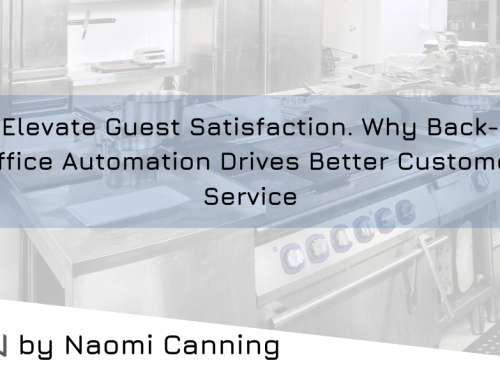Introduction
Fast and efficient invoicing and billing processes are critical to maintaining a healthy cash flow. If you’re still relying on traditional methods, it’s time to step up your game and unlock the power of Electronic Data Interchange (EDI) Invoicing.
This modern approach not only speeds up invoice processing but also significantly simplifies billing operations, providing businesses with an edge in their financial management.
What Is EDI Invoicing?
EDI invoicing is the exchange of business information in a standard and structured format between computers, which automates the payment cycle with electronic invoices.
Definition And Explanation
EDI Invoicing, or Electronic Data Interchange invoicing, refers to the computer-to-computer exchange of business documents, such as invoices, in a standardized and structured format.
For example, imagine a restaurant utilizing an EDI invoicing system for its accounting needs. When this restaurant receives supplies from a vendor, their respective accounting systems communicate with each other electronically to generate and send invoices without having to rely on traditional paper-based methods like faxing or mailing.
Advantages Of EDI Invoicing Over Traditional Invoicing
EDI invoicing provides a plethora of benefits that make it a superior choice compared to traditional invoicing methods. Some advantages include:
- Reduced Errors: As EDI automates data entry, the chances of human error in invoice processing are significantly minimized, leading to more accurate and reliable transactions.
- Faster Processing: Electronic transmission of invoices allows for quicker delivery and processing times, enabling businesses to receive payments faster and improve cash flow.
- Cost Savings: By eliminating the need for printing, mailing, and handling paper invoices, EDI invoicing reduces overhead costs associated with traditional invoicing methods.
- Improved Visibility and Control: Real-time access to invoice data through electronic systems enables better tracking of payments and enhanced visibility into the accounts payable process.
- Enhanced Security: The use of encryption and secure communication channels during the exchange of EDI invoices ensures greater protection from unauthorized access or tampering.
- Environmental Benefits: Adopting EDI invoicing contributes to a greener environment by reducing paper consumption and waste generation associated with traditional paper-based processes.
- Better Data Analysis: With digitized invoice information readily available in electronic format, businesses can analyze their financial performance more efficiently and gain valuable insights for decision-making purposes.
- Streamlined Communication: EDI eliminates the need for manual intervention in transmitting invoices between trading partners, fostering seamless communication and collaboration between organizations.
- Scalability & Adaptability: As businesses grow or regulations change, adapting an existing EDI system is typically more manageable than overhauling manual processes, making it an ideal long-term solution for evolving companies.
- Competitive Advantage: Businesses that adopt EDI invoicing benefit from increased efficiency, cost savings, and improved accuracy – all essential factors that contribute to greater competitiveness within their respective markets.
How Does EDI Work?
EDI, or Electronic Data Interchange, functions as a digital bridge between businesses to facilitate seamless and efficient communication of vital documents – invoices being one of them.
To comprehend how EDI works, imagine the process beginning with a business generating an invoice using its accounting software.
Upon successful conversion into the standardized language that all participating trading partners can understand, this electronic invoice document (now referred to as an “EDI invoice”) is securely transmitted over a secure network – like the internet or through VANs (Value Added Networks).
The receiving party then uses their own EDI translation software to convert the received data back into a readable format for integration with their accounts payable system.
For instance, suppose Company A needs to bill Company B for services rendered. In this scenario, Company A would generate an invoice using their preferred restaurant accounting software and send it across as an EDI document.
Upon receipt by Company B’s accounts payable department, automated processing occurs without any need for manual intervention – significantly reducing processing time while increasing accuracy throughout the transaction lifecycle.
Enhancing Cash Flow With EDI Invoicing
EDI invoicing can significantly improve cash flow by providing faster invoice processing, improved accuracy and timeliness, and a reduction in disputes and chargebacks.
Faster Invoice Processing
One of the major advantages of using EDI invoicing is faster invoice processing. Unlike traditional invoicing methods, EDI enables businesses to quickly and easily create invoices electronically, eliminating the need for manual data entry and paper-based processes.
This means that invoices can be processed in a matter of minutes or hours rather than days or weeks.
In addition to improving cash flow, faster invoice processing also reduces errors and improves accuracy. Electronic invoices are automatically validated against purchase order data, ensuring that there are no discrepancies or errors that could delay payment or result in chargebacks.
Improved Accuracy And Timeliness
EDI invoicing enhances accuracy and timeliness in billing and payment processing. Unlike manual invoice entry, EDI eliminates the need for data re-entry, reducing errors associated with typos or incorrect information input.
This automation results in improved invoice accuracy and reduces the potential for disputes and chargebacks.
For example, a restaurant using account payable automation software that utilizes EDI can ensure timely payments to its vendors by automating the entire process from purchase order receipt to payment scheduling.
The software can verify that all invoices are accurate before approval for payment is submitted.
By adopting an automated approach through EDI invoicing solutions like accounts payable automation software, companies can expect greater efficiency as well as cost benefits from streamlined processes that improve critical supply chain KPIs such as DSO (days sales outstanding) and cash conversion cycle.
Reduction In Disputes And Chargebacks
EDI invoicing can significantly reduce disputes and chargebacks, which are common problems with traditional paper-based invoicing. With EDI, invoices are sent electronically, often directly from one system to another, eliminating the need for manual data entry and reducing the likelihood of errors.
Moreover, EDI allows suppliers to include more information with their invoices than is possible on a paper invoice. This additional information could include tracking numbers, item descriptions or images that may further help customers understand what they have been billed for.
Ultimately by implementing EDI invoicing as part of your accounts payable process you will not only improve accuracy but also increase operational efficiency – saving time while also enhancing cash flow management capabilities.
Strategies For Optimizing Accounts Payable
To optimize accounts payable when using EDI invoicing, consider the following strategies:
- Set up a standardized process for invoice processing to minimize errors and delays.
- Create vendor management policies that ensure timely payment while avoiding unnecessary expenses.
- Leverage automation software for invoice matching, approval routing, and payment processing.
- Establish clear payment terms with vendors to avoid late fees or interest charges.
- Consider early payment discounts as an incentive to accelerate cash flow.
- Regularly review payable reports to identify discrepancies and outliers.
- Track metrics like Days Payable Outstanding (DPO) and Payment Accuracy Rate (PAR) to monitor AP performance
- Integrate your AP software with your general ledger for real-time data synchronization.
By implementing these strategies, businesses can leverage the benefits of EDI invoicing to streamline their accounts payable processes and improve cash flow management.
Simplifying Billing With EDI Invoicing
Simplify billing with EDI invoicing by automating manual tasks, integrating with existing systems, and enhancing visibility and control to ultimately save on costs – learn how in this article.
Automation Of Manual Tasks
One of the biggest benefits of EDI invoicing is its ability to automate manual tasks associated with billing. This includes the automation of data entry, document routing, and approval workflows.
With EDI invoicing solutions like automated invoice capture software, businesses can eliminate the need for employees to manually input data from invoices into their accounting systems.
By automating these manual tasks, businesses can significantly reduce processing time and errors while improving overall efficiency. For example, restaurants can benefit greatly from AP automation since they receive multiple invoices daily that require payment within a short period; therefore it’s imperative that processing accounts payable is done at an appropriate pace without delay or human error.
Integration With Existing Systems
Businesses can simplify their invoicing processes by integrating EDI with existing systems. This integration allows for seamless transfer of data between different software applications, eliminating the need for manual data entry and reducing errors.
Integration also provides enhanced visibility and control over the invoicing process. Managers can track invoices at every stage of the billing cycle, from receipt to payment, allowing them to identify bottlenecks and areas where improvements are needed.
Enhanced Visibility And Control
One of the key advantages of EDI invoicing is the enhanced visibility and control it provides to businesses. With traditional paper-based invoicing, businesses face challenges in keeping track of invoices, payments, and disputes.
However, with EDI invoicing, businesses can access real-time information about invoice status, payment history, and any potential errors or discrepancies.
Moreover, EDI invoicing also offers greater control over the entire invoice process. Through automation and integration with existing systems such as accounting software and enterprise resource planning (ERP) systems, businesses can reduce manual errors and streamline their operations.
This not only saves time but also reduces costs associated with manual processing.
Cost Benefits Of AR Automation
Implementing AR automation in your business can lead to significant cost savings and improvements in efficiency. The table below outlines the main cost benefits of AR automation that can be realized through the use of EDI invoicing.
| Cost Benefit | Description |
| Reduced Manual Data Entry | By automating the AR process, businesses can significantly reduce the time and labor costs associated with manual data entry, leading to increased efficiency and productivity. |
| Lower Paper and Postage Expenses | EDI invoicing eliminates the need for paper-based invoicing and the associated costs of printing, mailing, and storing physical documents. This results in substantial savings on postage and office supplies. |
| Faster Payment Processing | As EDI invoicing accelerates invoice processing times, businesses can receive payments more quickly and reduce their dependency on costly short-term financing to cover cash flow gaps. |
| Decreased Disputes and Chargebacks | Improved accuracy and timeliness of invoicing through EDI helps minimize disputes and chargebacks, reducing the costs associated with resolving these issues and maintaining customer satisfaction. |
| Enhanced Visibility and Control | Automation allows businesses to have better visibility into the status of their accounts receivable, enabling them to make more informed decisions and better manage their cash flow, thereby reducing the need for expensive cash flow management tools. |
The Power Of EDI Invoicing
EDI invoicing offers increased efficiency, streamlined processes, scalability and adaptability, as well as improved insights into accounts payable and receivable for businesses.
Increased Efficiency
One of the primary benefits of EDI invoicing is increased efficiency. With traditional paper-based invoicing, it can take weeks for an invoice to be processed and paid. However, with EDI technology, invoices can be sent and received in a matter of seconds or minutes.
In addition to speed, EDI invoicing also improves accuracy by reducing human error and eliminating the need for manual data entry. This not only saves time but also reduces the risk of costly mistakes such as overpayments or late fees.
For example, using AP automation software that integrates with your accounting system ensures that all transactions are logged automatically without any errors occurring during manual keying-in processes.
Streamlined Processes
Implementing EDI invoicing into business processes can lead to significant streamlining of operations. By automating manual tasks and integrating with existing systems, companies can free up time for employees to focus on more strategic work, while also ensuring accurate and timely invoice processing.
For example, restaurant accounting software that incorporates EDI invoicing has been shown to improve inventory management by automatically updating inventory levels in real-time as orders are fulfilled.
Additionally, automation of accounts payable (AP) functions through EDI reduces errors associated with manual data entry and minimizes the need for paper-based invoices or checks.
Scalability And Adaptability
One of the key benefits of EDI invoicing is its scalability and adaptability to meet the changing needs of businesses. As companies grow, their invoicing demands also increase, and traditional manual processes can become overwhelming.
Moreover, EDI solutions are designed to integrate seamlessly with existing systems such as accounting software, making it easy for businesses to transition smoothly from one system to another while keeping track of all financial data in real-time.
This level of flexibility ensures that businesses can keep up with evolving business requirements while maintaining a streamlined and efficient invoicing process.
Improved Insights
By adopting EDI invoicing, businesses can gain improved insights into their cash flow and financial operations. With comprehensive dashboards and consolidated information, businesses have near real-time visibility into their cash flow, which allows them to make informed decisions.
Moreover, EDI reporting capabilities give companies the ability to analyze data on invoices processed by the system in a more granular way than they would with traditional paper-based invoice processing.
Through this analysis, finance teams can identify patterns and trends in spending behaviors that may not be readily apparent through other methods. For example, reports can identify customers who frequently pay late or have high dispute rates which help organizations optimize their accounts payable processes further.
Conclusion
In conclusion, EDI invoicing is a powerful solution that can enhance cash flow and simplify billing processes for businesses. With faster invoice processing, improved accuracy and timeliness, reduction in disputes and chargebacks, and automation of manual tasks, businesses can optimize their accounts payable process with ease.
Additionally, integrating existing systems and gaining enhanced visibility and control over the payment cycle results in cost savings through AR automation. By unlocking the power of EDI invoicing solutions like integrated receivables software or accounting restaurant software, organizations can improve efficiency while scaling operations for future growth.





